Last week, Steve asked for a post about #BookTok on TikTok. Since I wrote an article for Anne R. Allen’s blog in October 2022, I’ll repost it here so all of TKZ can benefit. I’ve included 2024 updates in bold.

When the buzz of TikTok started spreading, I wanted no part of it. With two Facebook accounts, Twitter, Instagram, Pinterest, LinkedIn, YouTube, Goodreads, etc. the last thing I needed was another social media site. I could barely juggle the audience I’d amassed on social media over the last twelve years. Then I discovered #BookTok, and my outlook changed.
#BookTok
The hashtag #BookTok opens a doorway to a subsection of TikTok where thousands of voracious readers spend their time, along with #WriterTok and a host of genre hashtags. #BookTok exploded over the last two years. In fact, #BookTokers call the dancing/singing videos “the wrong side of TikTok.” Rarely, if ever, do we venture outside of #BookTok — a loyal, generous community bonded by our love of the written word.
Remember when social media was your guilty pleasure, your happy place, and you looked forward to hopping online? For many of us, that drive faded away when politics and rants filled our timelines.
Yet, having a social media presence is a vital part of an author’s career. The problem is, once we form the emotional connection between social media and publishing, engaging with readers can start to feel a lot like work. #BookTok reignited my spark, and it can do the same for you. Not only is it a blast, TikTok in general is a selling machine.
WHAT IS TIKTOK?
TikTok calls itself an “entertainment platform.” Statistics show people spend more time watching TikTok videos than Netflix. Shocking, right? By its very nature, TikTok is a storytelling platform. The videos that reign supreme tell some sort of story, engaging the viewer through drama, comedy, or bewilderment.
The beauty of TikTok is that even with only a handful of followers, content can still go viral. I’ve personally witnessed new accounts gain 20-30K views on one video. Romance (all genres) do the best, followed by fantasy/sci-fi, mystery/thriller/suspense, YA, paranormal, and horror. True crime and nonfiction have their own massive audience. No matter what genre you write in, your audience is on #BookTok. All ages, all genres.
TIKTOK MYTHS
- I’m too old for TikTok.
As someone in their — ahem — mid-fifties, I thought the same thing. Nothing could be farther from the truth. When TikTok hit the scene, it did cater to a younger demographic. That’s changed over the years. #BookTokers range from 20s to 80s.
- I refuse to make a fool of myself to sell books.
Sure, there’s a lot of silliness on TikTok, but you don’t need to do anything that makes you uncomfortable. Be your beautiful, reserved, crazy, funny, introverted, or extroverted self. That’s who readers want to know, not some made-up version of yourself. Although, if you write spicy romance and want to conceal your identity, that’s okay, too.
- I don’t have time to learn another social media site that’ll probably disappear in a few years.
All writers suffer with the same issue. There simply aren’t enough hours in the day. Here’s a cold, hard truth: sooner or later authors won’t have a choice about joining TikTok. Our audience is turning away from Facebook and Twitter. At the end of last year (2021), Facebook reported its lowest daily views yet, and they attributed the loss to TikTok.
Of all the social media sites, X-Twitter has the lowest ROI for selling books. Do you know who has the highest? TikTok. Why? Because it’s unlike any other social media site.
- You must be tech-savvy to create videos.
TikTok does have an advanced video creator built into the app, but it’s very easy to use. They also provide video tutorials. If you still have trouble, head to YouTube. Creators post step-by-step instructions that anyone can follow.
- You must be comfortable in front of the camera to use TikTok.
I’ll tell you a little secret. The thought of shooting videos scared me half to death. The few videos I posted on social media took me forever to create, obsessing over every tiny detail, and I still wasn’t happy with the end result. Before I jumped on TikTok I froze in front of the camera. I wasn’t a fan of public speaking, either. Sure, I could hold my own at a book event, but I still trembled inside.
#BookTok helped me overcome that heart-stopping fear. And tomorrow, I fly out to film three episodes of a true crime series for TV (UPDATE: They’ve aired. Check out A Time to Kill, Season 6, on Investigation Discovery). Guess how the producers found me? Initially through my website — I still say authors need a home base — but they got a feel of my personality through my TikToks (videos). I can’t say that sealed the deal — they also read my books — but it definitely helped.
HOW DO AUTHORS START ON #BOOKTOK?
Download the app and setup an account. I started with a business account, but that was a mistake. Personal accounts get more views. Be sure to use your author name. If you use more than one pen name, then either create an account for each or umbrella them all under your real name. Choice is yours.
All you’ll be doing at first is lurking. Let me warn you. TikTok may seem overwhelming at first. You can spend hours watching talking dog videos, cooking videos, and any other passion you may have. Here’s the thing. The more content you watch that’s not book related the more you’ll confuse the algorithm. Learned that lesson the hard way.
Once you gain a thousand followers, the link in your bio becomes clickable. Still include one, though. People know to copy/paste a dead link. I use LinkTree. Back in 2016, LinkTree solved social media’s most annoying problem — only allowing one link in bios. Now, all your social media, newsletter sign-up page, website, blog(s), books, giveaways, etc. can be housed under one LinkTree link. And it’s free!
THE TIKTOK ALGORITHM
TikTok’s secret algorithm far exceeds all its competitors. When a new user signs up, it throws all kinds of videos at you, then watches and learns which ones you react to or re-watch. If you stop at every talking dog, the algorithm will flood your For You Page (timeline) with more talking animals. The longer you watch, the more it thinks that’s what you want. I can’t resist anything animal related. Hence why it took me a while to train the algorithm to gain more #BookTok followers.
Some authors advise to create two accounts. One to watch animals or whatever. The second for book related content. Alas, I use one account for everything, but I’m cognizant of the type of videos I watch. The algorithm has figured out that I love books and animals. Since I include animals in my books, I feel it’s related.
Pay close attention to authors in your genre.
- What type of content do they create?
- Do their videos get a lot of interaction?
- Do they post only book content?
- What other type of content do they post?
- How does their audience react?
CREATING YOUR FIRST TIKTOK
Once you get comfortable with the app, you’ll feel the urge to jump in. Resist that urge for another week. I did nothing but lurk for a solid month. By the time I created my first TikTok *cringe* I felt I knew the rhythm of #BookTok. I didn’t. And neither will you. But that’s okay. The only way to learn the ins and out of #BookTok is to jump in headfirst.
Then why did you tell us to lurk first?
Because you’ll be ahead of the game if you do. All that knowledge you’ve acquired will benefit you when you’re ready. Think about this… You’re in #BookTok and stumble across a how-to video. If you don’t know what they’re talking about, you’ve wasted valuable information. For example, Trending Sounds or “how to invert” the title on your cover so it’s not a mirrored image.
WHAT IS A TRENDING SOUND?
A Trending Sound could be a fragment of music or a voiceover that helps you connect with an audience. All of TikTok uses Trends. You’ve probably seen the dance videos that everyone copies. Well, #BookTok has their own Trends and Trending Sounds.
2024 UPDATE: TikTok also owns CapCut, a video software app. If you use a trending CapCut, you’ll get more views. This video sold 100 books in one day. Why? Because I used a trending CapCut. When’s the last time one of your Facebook or Twitter posts sold that many books in a day? A video, I might add, that took me less than one minute to create.
It’s fantastic exposure. TikTok content lives forever. Unlike other social media sites, the algorithm constantly pushes old TikToks to new people.
Early on, I created a video of calling “my” murder of crows for breakfast. I showed the empty trees, me calling for Poe (the alpha), and the crows flying in moments later. That one video has over 5K views and climbing (2024 UPDATE: 31K views and climbing). It relates to my books because in my Mayhem Series, my antihero has three wild crow companions (Poe, Allan, and Edgar).
DUETS
Duets are when you, well, duet someone else’s video. Here’s an example of me duetting a cop’s video.
It works for my audience because I’m a crime writer. Romance writers duet male models, and their audience goes crazy. Paranormal writers might duet a medium or ghost hunter. If you write cozy mysteries in a library setting, duet a librarian. Write about vampires? No problem. Duet a vampire (yes, they’re on TikTok). Serial killer thriller author? Duet videos about serial killers. Think outside the box.
FINDING YOUR AUDIENCE
Are your books geared toward an older audience? Use the #GenX hashtag along with a genre hashtag. Are you targeting millennials? Use #GenY. Knowing who your audience is the key to finding potential readers. Niche down from there.
Some authors say never to follow other authors, but that’s a mistake. Writers are your people, your tribe. We learn from each other. We help boost each other’s views. #BookTok wouldn’t be nearly as fun without other writers. And we read, too!
TRENDS
We also start our own Trends, and they’re hilarious. Last week, a writer friend used the videotape filter. I’d need a whole other post to discuss filters. Suffice it to say, the TikTok looks like you’re being videotaped by someone else. In this case, the police were searching for a missing person: Grammarly. She was Suspect #1. In her video, she named me and a slew of other mystery/thriller authors as possible suspects, and we all created videos of being interrogated by the cops. Mystery & thriller readers loved it! We all gained new followers and sold books from that one idea.
And that, ladies and gentlemen, is the genius behind #BookTok. It’s marketing that doesn’t feel like marketing. Some savvy authors sell between 200-600 books per week from #BookTok alone. Still think it’s a waste of time?
FINAL THOUGHTS
I’m not sayin’ it’s easy to get started. Finding your groove takes time. But once you get the hang of it, you’ll find your audience much faster than any other social media site. If you’ve never watched a video review of one of your books, you’re missing out on something special. It’s humbling to witness the reaction of a reader who just closed the cover, tears still in her eyes while she gushes about how much she loved your characters or the story, and how she felt while reading.
Duet every review.
Authors can either “blind react” to a review or prepare themselves first, both done via the Duet feature, helping the review reach more and more readers. After watching a particularly emotional review of I AM MAYHEM, my son said to me, “Imagine how many other readers you’ve touched in the same way?” He’s right. Before #BookTok, authors never had the pleasure of witnessing immediate reactions from readers. Now we do.
Have you considered joining TikTok? Has this post inspired you to see if you’d be happy there? What are your biggest concerns?
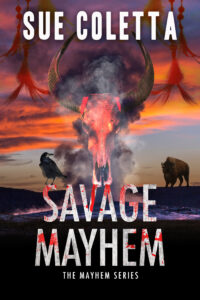


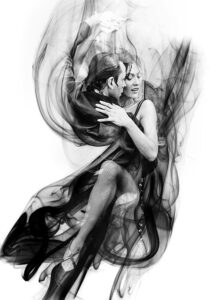 I was
I was 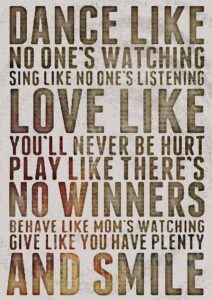

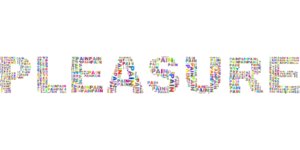
 It’s no secret that I’m slightly obsessed with the brain. Okay, okay, it’s a full-blown obsession, but it’s such a fascinating organ!
It’s no secret that I’m slightly obsessed with the brain. Okay, okay, it’s a full-blown obsession, but it’s such a fascinating organ!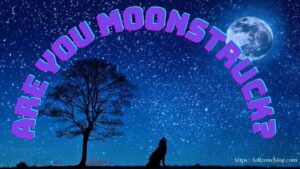 For the last few days, I’ve felt off. Writing had been difficult. Words refused to flow. Pumping out a decent chapter likened to delivering a 10 lb. baby with wide shoulders and oversized head. Even my playlists didn’t match my mood.
For the last few days, I’ve felt off. Writing had been difficult. Words refused to flow. Pumping out a decent chapter likened to delivering a 10 lb. baby with wide shoulders and oversized head. Even my playlists didn’t match my mood.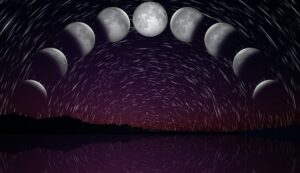
 Back in 2015, I was chatting with a dear writer friend, Paul Dale Anderson, about the different types of writers and readers.
Back in 2015, I was chatting with a dear writer friend, Paul Dale Anderson, about the different types of writers and readers.